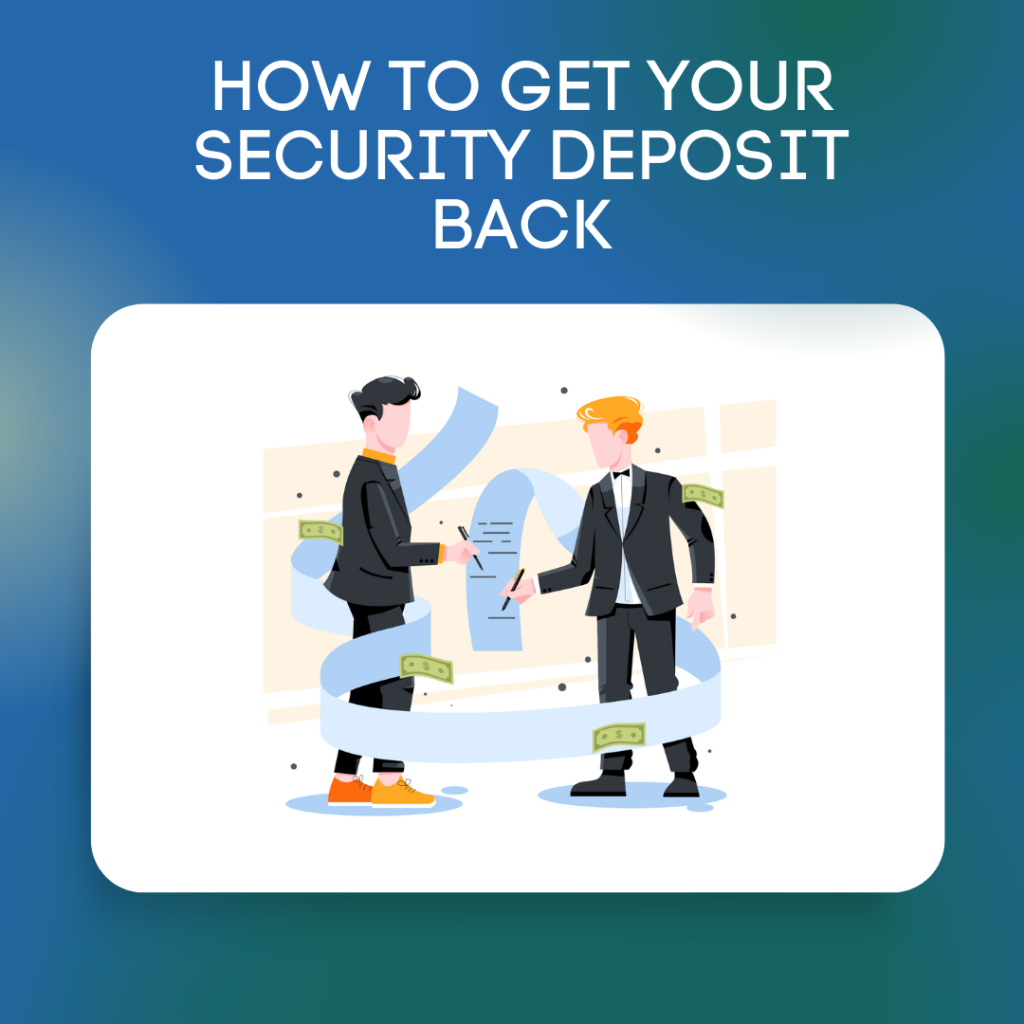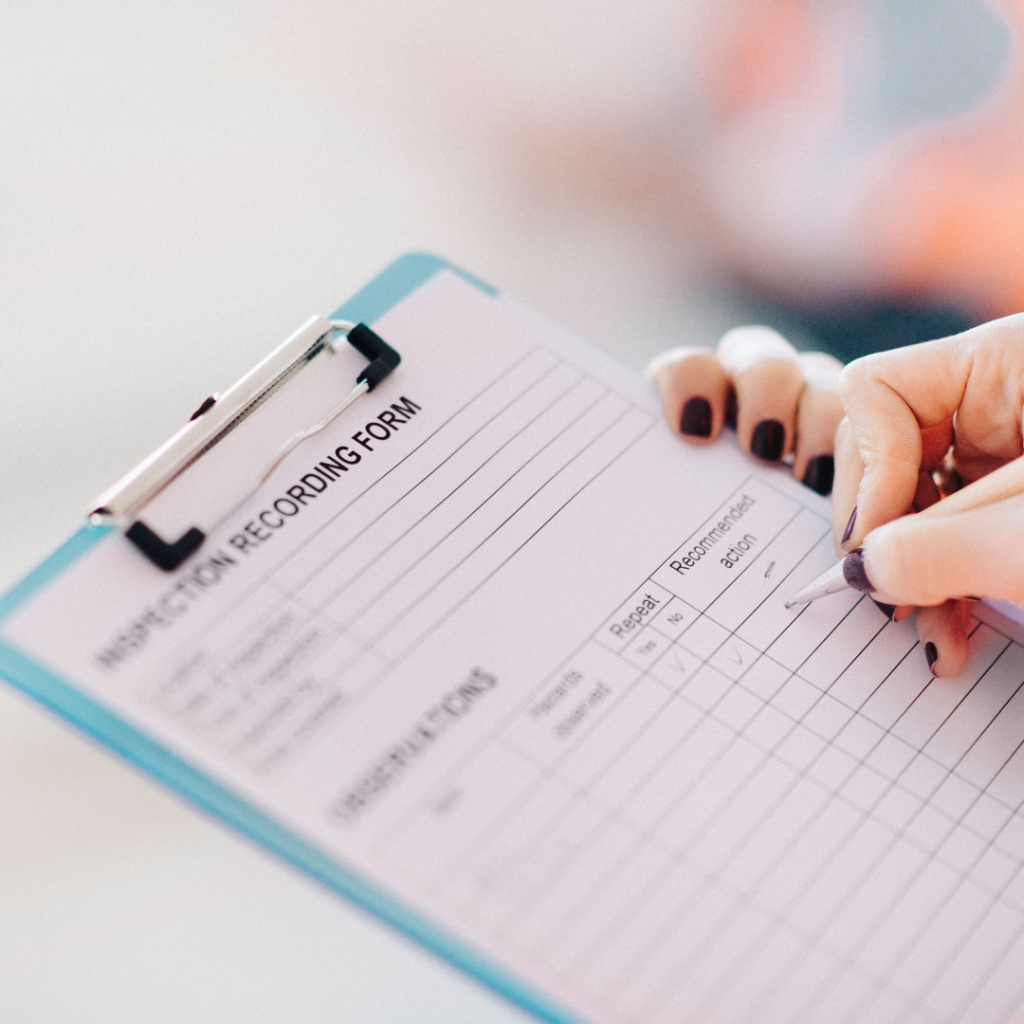How To Get Your Security Deposit Back
If you have ever rented an apartment and needed to move, you know that it isn’t always an easy process to get your security deposit back. In this article, we will discuss what a security deposit is, where does the money go while you are a resident, and how to get your deposit back when you’re ready to move.

If you are getting ready to sign your first Lease, you may be asking, “What is a security deposit?” Between first months rent, utilities, and application fees, you may be wondering why you need to add another deposit. So, what is a security deposit?
Simply put, a security deposit is a lump sum of money that is given to a Landlord or Property Management Company at the beginning of a Lease. This deposits acts as Insurance against potential damage or missed rent payments. Think of it as saving for a rainy day. The good part is security deposits are refundable! If you are a person who is clean, careful and responsible with making payments on time, there is a good chance you can get your deposit back.
Let’s figure out how you can give yourself the best chance to get your money back.
Inspections
This may be one of the most important steps in protecting yourself from being blamed for damage when you move into a new rental. The previous renter may have left behind some broken fixtures or marked up walls that the Landlord/Manager may have overlooked. Inspections equal protection for you and your security deposit.
Bonus tip: Invite your Landlord or Property Manager to the inspection with you. This way you can uncover every problem and point it out upfront and all parties are aware. This is a great rule of thumb in Real Estate, do the best you can to avoid being blamed by pointing out and disclosing problems from the get go.

Each State and City will differ on what is required at inspection time. In San Diego, CA, there is a form called a Move In Move Out (MIMO) that should be filled out at the beginning of a lease. Below is an example of one from the Apartment Owners Association of CA
For a complete list of things to look for on your inspection and more tips, click here!
How Much Is A Security Deposit?
This again will depend on where you are renting. In San Diego, Landlords are limited to what they can charge by California Law. For an unfurnished Unit, Landlords can charge up to 2 times the monthly rent, and for a fully furnished Unit up to three times the monthly rent. It is not necessary to charge the full amount and often times you will see security deposits equal to one months rent, especially if you have good credit with a good history of tenancy.
Pets
Your Landlord may allow pets in the Property, but will often times require more money down for your deposit, a separate pet deposit, or additional rent for your pet. This is because pets can cause damage or leave odors behind that those without pets wouldn’t generally have. Make sure to lay this out early on when you are signing your lease. If your Landlord says no pets and you bring one in later, you could be evicted. The laws on pets are very detailed and you can read more about them here.
When Do I Pay My Deposit, And Where Does It Go?
Exactly like your first month’s rent, you must send your Landlord or Property Manager the security deposit prior to move in. A Property Management company will hold your deposit in an interest bearing account in order to keep your deposit from being commingled with other funds. If you are dealing directly with a Landlord who manages the property on their own, you should ask where they will keep the deposit to ensure that it is not held in a personal account or spent on accident. This is your money and should not be used for any other purpose than unpaid rent or repairing damages.
Regardless of where it is held, you are entitled to your deposit as long as you perform under the terms of your lease agreement.
When Do I Get My Deposit Back?
Your security deposit will be held in an account until the termination of your lease. This is where you will want to pull out that MIMO form that you filled in at move in, and reinspect the Unit and show that you haven’t caused any new damage or wear outside of the normal.
Depending on your State, the rules may vary from 14 to 60 days to return your deposit after you move out. Here in San Diego, you will have 21 days for a Landlord to return your deposit. If you were the perfect tenant and had zero issues and tracked all the damaged items when you moved in and made sure you left the property the same as when you found it, you should have no problem receiving the deposit back in full. But let’s face it, sometimes you can’t control small damages or stains on the carpet or marks on the walls (especially if you have kids). So, what then?
You will likely receive a letter with an itemized report of all of the damages and repairs that needed to be made after your stay. These will be deducted from your deposit and will likely be minimal. Cleaning the property, rekeying and other various expenses may show up on the report. It shouldn’t come as a surprise to see some deductions, but something like replacing a broken outlet cover shouldn’t be reason for your full deposit to be withheld.
If you feel as though you didn’t receive enough of your deposit back, you can write a demand letter to you Landlord or Property Manager to make your case as to why you should have gotten your deposit back. Reference the MIMO that you filled out and show that any damage or repair wasn’t your doing. In many cases, you will be able to work it out with them and ensure your money is back in your hands.
Now that you know the ins and outs of your deposit and have your money back in hand, you can continue forward as an wiser and savvier renter and future homeowner!
